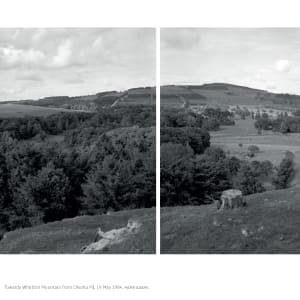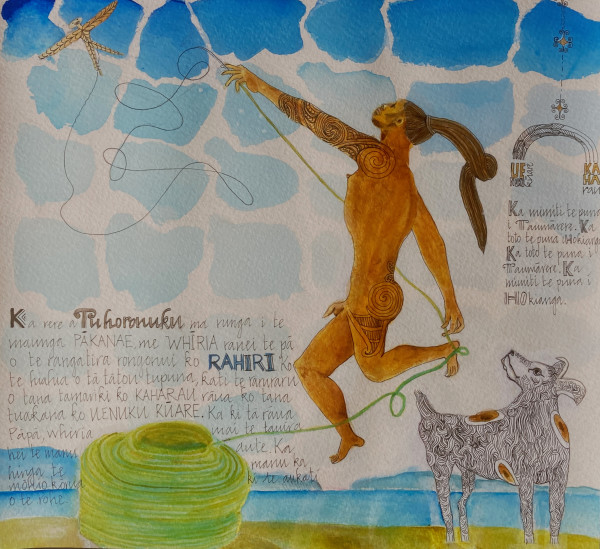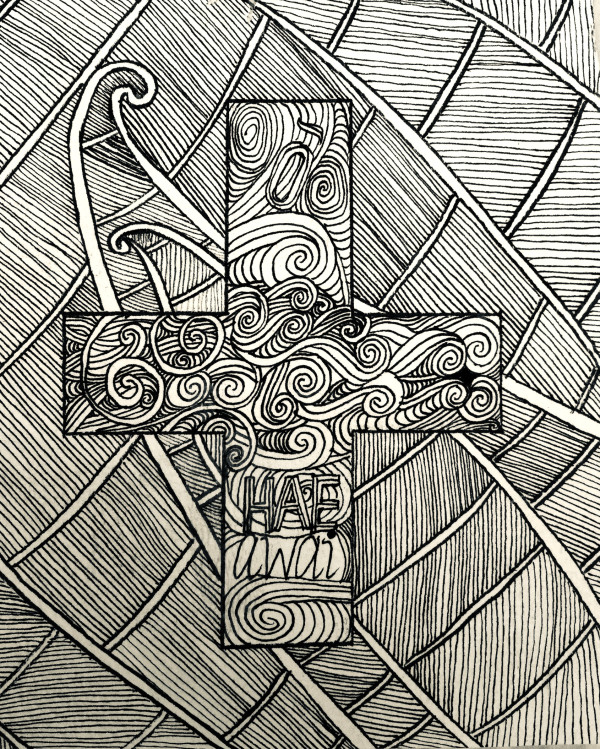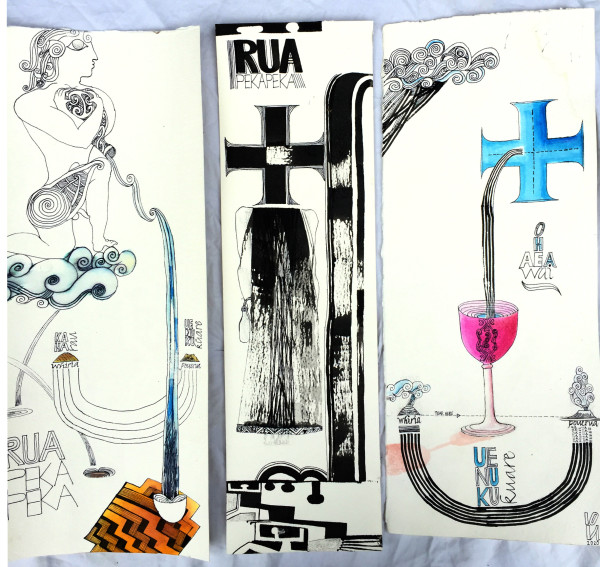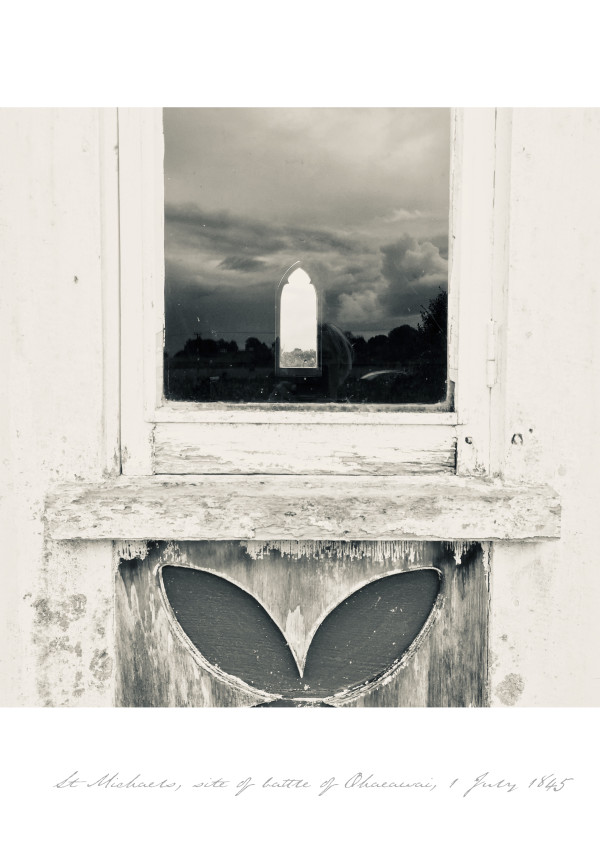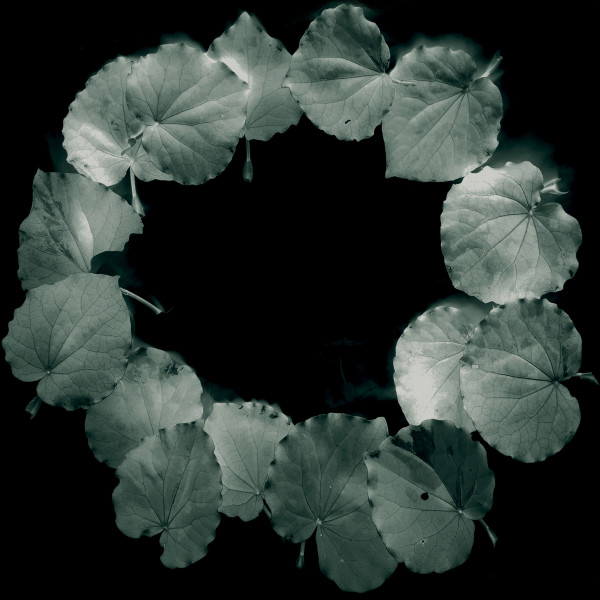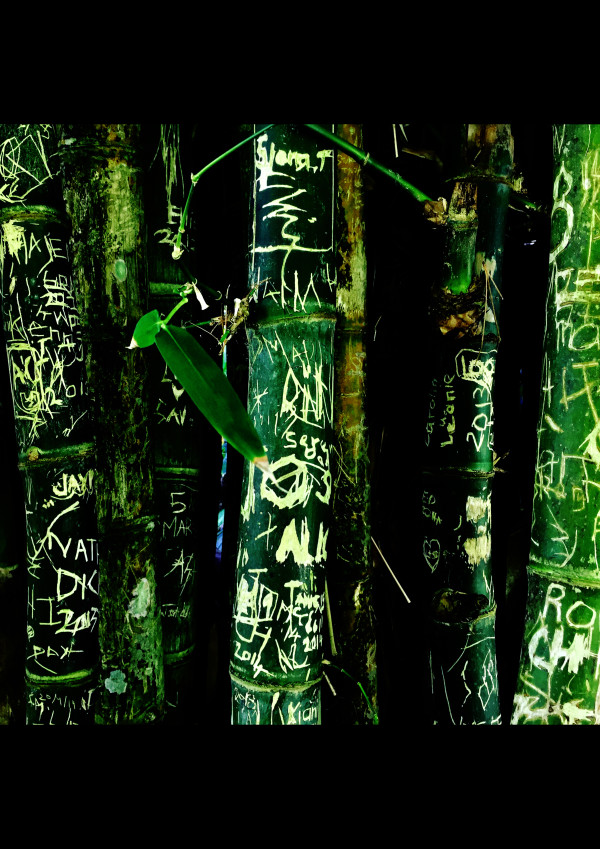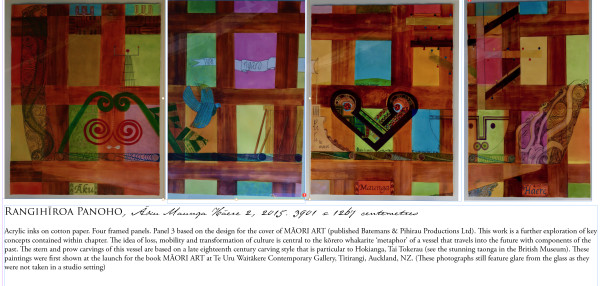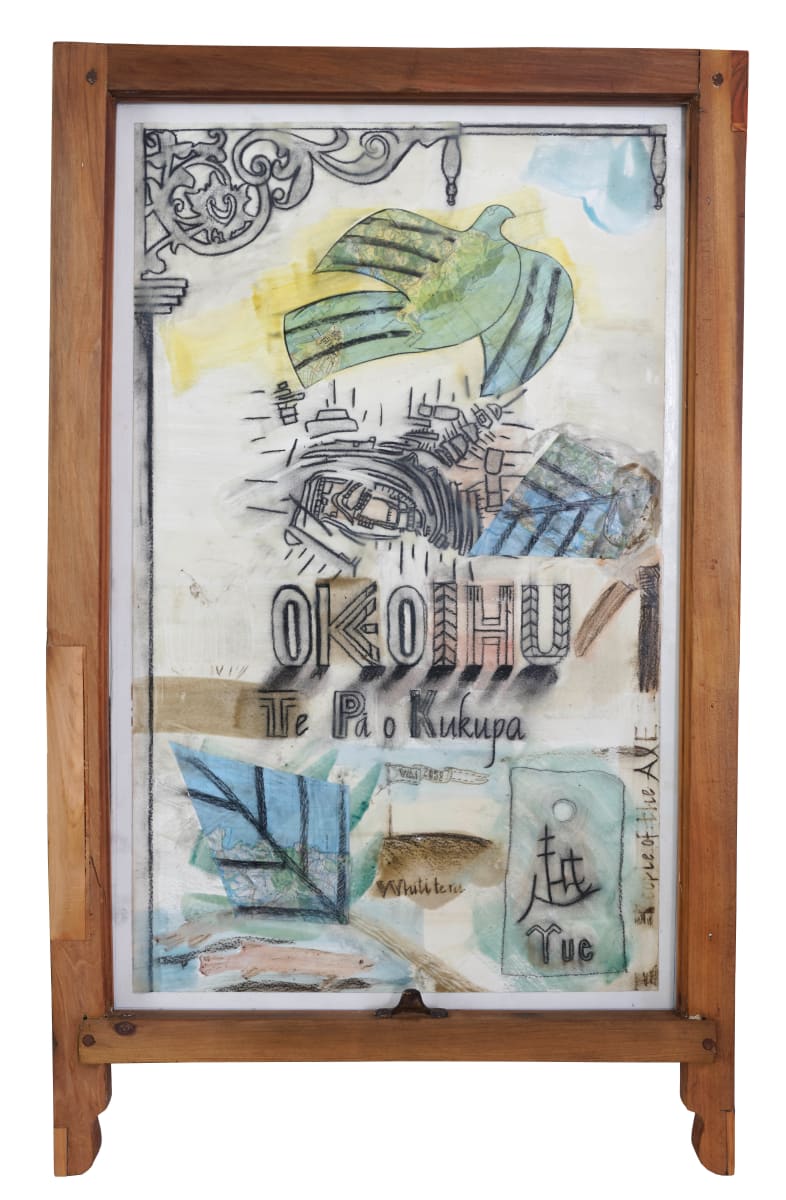
'Yueh...' the painting references Okoihu, the fighting pā 'palisaded fortification of the northern leader Kūkūpa. It stands opposite the ancestral mountain Whatitiri and was the site for an ancestor receiving the name Pā noho (to sit) as a consequence of his protesting the breaking up of the maunga by the Crown into 15 farms in 1897. Yueh the term is originally a reference to a Neolithic people occupying the northern coast of China who eventually migrated across the strait to Taiwan where a proto-Austronesian ocean going vessel culture was developed.
- Subject Matter: tribal landscape, Te Uriroroi, Chinese neolithic, kūkūpa 'native NZ pigeon

